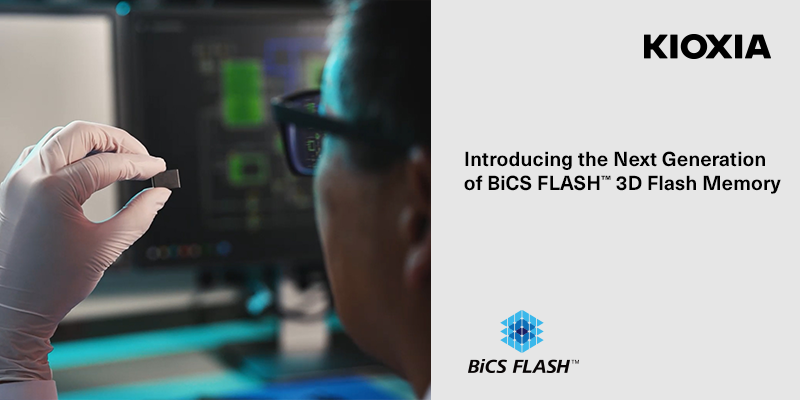
Whether you're using a cutting-edge smartphone, a powerful PC or tablet, or managing vast datasets in a data center, one common requirement unites them all: the need for advanced, high density flash memory.
At KIOXIA, we have a reputation for pushing boundaries. Our latest innovation, the next generation of our BiCS FLASH™ 3D flash memory, continues this legacy. What sets it apart is the groundbreaking architectural innovation that underpins its design. Featuring 218-layers with CMOS directly bonded to array (CBA) architecture, lateral shrink technology in a 4-plane device, this powerful combination of vertical and lateral scaling produces greater capacity with fewer layers. The result is higher density, smaller die size and optimized cost.
When it comes to features, we’re proud to say that this new technology includes an interface speed increase of 60% to 3.2 Gbps, 20% write performance improvement, more than 10% read latency improvement, 50% higher bit density, and greater than 30% improvement in power efficiency, compared with the previous generation.
Our BICS FLASH 3D flash memory was designed with data center efficiency in mind. Addressing the most challenging data center issues including density per rack slot, power efficiency and IOPS/QoS.
As the inventors of NAND flash, KIOXIA is committed to developing and supporting the technology long term. If you’d like to learn more about BiCS FLASH 3D flash memory or our new CBA architecture check out our latest infographic.
Features and typical use performance improvements as compared to the previous generation of BiCS FLASH™ 3D flash memory.
In every mention of a KIOXIA product: Product density is identified based on the density of memory chip(s) within the Product, not the amount of memory capacity available for data storage by the end user. Consumer-usable capacity will be less due to overhead data areas, formatting, bad blocks, and other constraints, and may also vary based on the host device and application. For details, please refer to applicable product specifications. The definition of 1KB = 2^10 bytes = 1,024 bytes. The definition of 1Gb = 2^30 bits = 1,073,741,824 bits. The definition of 1GB = 2^30 bytes = 1,073,741,824 bytes. 1Tb = 2^40 bits = 1,099,511,627,776 bits.
Disclaimer
The views and opinions expressed in this blog are those of the author(s) and do not necessarily reflect those of KIOXIA America, Inc.